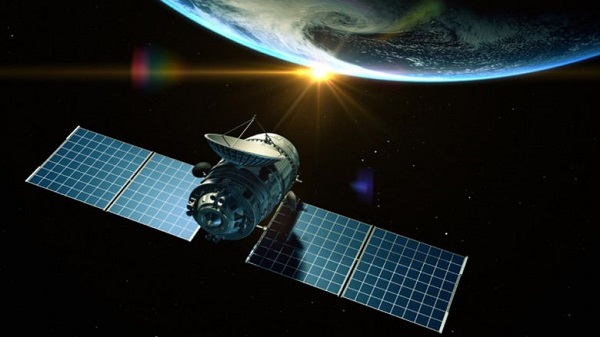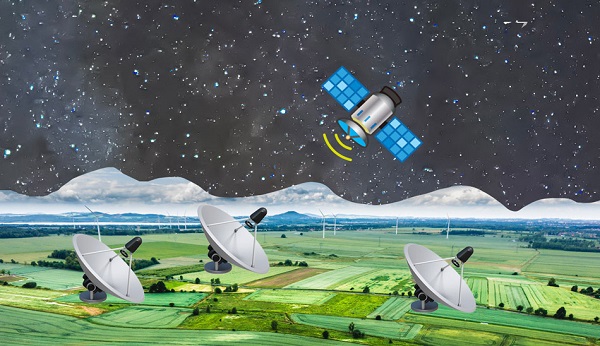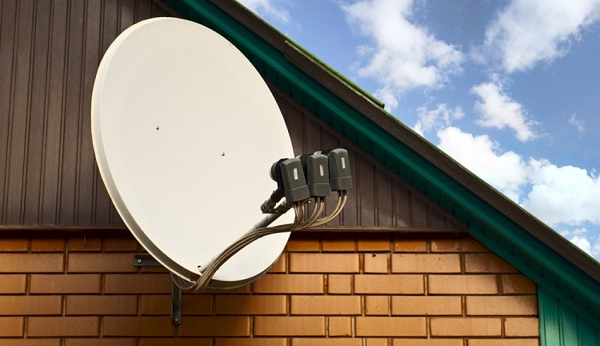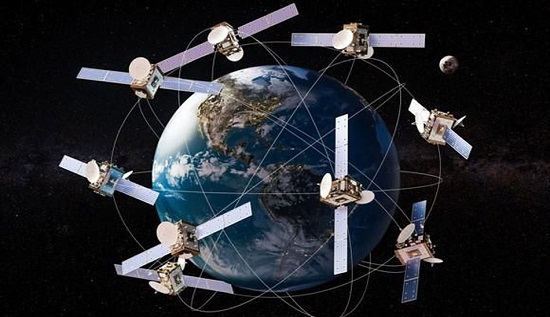Learn how to set up satellite internet and everything we need to know about it
Learn how to set up satellite internet and everything we need to know about it
If you are following the news of Ilan Mask's Starlink project, you probably have information about satellite internet. This article is dedicated to teaching satellite internet setup.
We have been hearing about satellite internet news for a long time, thanks to the SpaceX project and Starlink satellite internet, which is Ilan Mask's exclusive project for the provision of satellite and global internet. But how much do you know about satellite internet, its types, history and, of course, how to use it?
For a long time now, we have been hearing information and news about the Starlink satellite internet project from time to time, and this issue and its news, and of course the issue of free satellite internet, have intensified the search for information about this. But what exactly is satellite internet? What do we know about its history? Join us in Tekrato to learn how to set up satellite internet and address these thought-provoking topics.
Learn how to set up satellite internet and everything we need to know about it
Before discussing how to set up satellite internet, let's talk a little bit about what, history and of course the types of satellite internet. If you are not bored of this section, you can quickly skip these headlines and go to the satellite internet setup tutorial. But I recommend reading this section for comprehensive information about the satellite internet project.

What is satellite internet? In fact, satellite internet is one of the types of internet access that is available through satellite and is mostly used for cases where access to terrestrial and ordinary internet is not possible or does not offer good quality. These satellites are usually placed in Earth orbit and can be used anywhere in the world, even in places where the quality of ordinary Internet is very poor or not even available.
The speed of the Internet is generally measured by the speed of data transfer, and the wider the bandwidth, the faster the data transfer. The Satellite Internet project also relies on very large satellite bandwidth and Digital Video Broadcasting technology, which promises good speed.
What are the types of satellite internet?

In answer to the question of what is satellite internet? In a quick and simple answer, it should be said that satellite internet is divided into two categories, one-way and two-way. In one-way satellite internet, data reception is done using satellite, dish and LNB and it has a good speed. To use it, you must pre-purchase an account. Some companies offer these accounts. The problem with this type of Internet is that it does not send data. Data transmission is done with ordinary ADSL internet which is very fast and of course it costs a lot of money. This type of internet is suitable for bulk downloads; Because it has a high speed.
This type of satellite internet is also available in Iran and there are companies that offer it with good cost and various services. Of course, you should know that before taking any action, you must obtain the necessary licenses to use satellite internet. Otherwise, your attempt to launch satellite internet will be considered illegal and subject to punishment.
Unlike one-way satellite internet, as its name implies, two-way satellite internet will also be able to send and receive information. In this type of internet, you will send information by satellite and receive it by satellite. Of course, to use it, you need special and professional equipment related to it.
In general, the use of any type of satellite Internet is currently a bit complicated and expensive in Iran. As a result, it may not be worth the effort to use it right now. It is better to wait for the future to make it easier to use. Follow us to learn how to set up satellite internet.
Satellite Internet Setup Tutorial
Equipment required for satellite internet

The equipment needed for satellite internet generally relies on three main pillars: the satellite, a number of ground stations, also called gateways, and, of course, a small antenna or receiver for consumers.
The first tool to connect to the Internet is satellite. Satellite is actually the center of broadband satellite networks. The new generation of GEO satellites is more powerful and is located at a distance of 35,786 Earth. Of course, these new satellites have been optimally and purposefully produced that can send narrow, focused beams. So they take up much less space than older satellites.

The satellite itself has several antennas that receive communication signals from the ground to be able to deliver signals to the target. These antennas, which are used to receive and transmit signals from different parts of the earth, are activated by a repeater. The signals are sent to the ground through a channel called a carrier after being received from the ground and filtered and amplified and other processes.
Other important tools for connecting to the satellite Internet are terrestrial receivers. Along with the development of space satellites, terrestrial receivers, or as we said at the beginning, gateways have also made significant progress. A gateway or ground station can be a teleport or hub. This term is sometimes used to refer to the dish antenna, but is sometimes used to refer to the entire system.

In short, the gateway's job is to receive signals from the satellite and deliver them to the final consumer. Each gateway can provide a multi-service access network that allows the user to connect to the Internet.
The last tool to connect to the satellite internet is a dish and a modem that will be installed at the place of consumption. This end receiver has two internal and external parts. The dish-like radio antenna, of which we are probably all familiar with its shape and image, is installed outside the house and should not obstruct its receivers. A modem is also placed inside the house that controls the signals received by the antenna.

Various problems of the Internet in Iran and worries about its future have caused some people to think about using it, and based on this, we tried to teach how to set up satellite Internet. But again, we reiterate that connecting to the satellite Internet and using it is currently a costly and not very cost-effective job in Iran, which also has complicated administrative and legal issues.
What are the disadvantages of satellite internet?

Problems that should be mentioned as negative factors affecting the quality of satellite Internet include the impact of weather conditions such as strong winds and stormy rains. Poor latency or high ping rates are other negative points that can affect the purchase of satellite internet right now. In fact, ping rate refers to the time it takes for two computers, two devices, two services, or two servers to communicate on the same platform.
In the case of satellite internet, the ping rate is related to how fast files are sent and received. When you have to send data to space, ISP and back again, satellite internet has low latency or high ping rate; So if you are a gamer or need to use VoIP services, satellite internet is not for you.
Small and ordinary obstacles can affect the signal and its quality. Your plate should face south and anything in the direction of your signal, such as tall buildings or even tree branches, can affect signal quality.
Bandwidth limitations can also affect your effective use of satellite internet projects. You will actually have a lot of bandwidth every month, but not before the ISP reduces it. This, of course, is in line with their fair use policies. Instead, some ISPs set the daily bandwidth, which is a bit better, because if you run out of bandwidth early, you no longer have to wait for the moon to run out.
Nowadays, being expensive should be considered as one of the disadvantages and problems of using satellite internet project. As we said in the satellite internet setup tutorial, using satellite internet and providing the tools and equipment it needs is now a bit expensive.
What are the benefits of satellite internet?

But we should not be unfair and in another part of the training to set up satellite internet, we will discuss the benefits of this internet. Satellite Internet is now faster than the Internet available to us. Of course, this also depends on the package you buy. Satellite Internet connections and components can manage high bandwidth costs. So the speed or quality of your internet should not be affected by the large number of users or peak times. Plus, you don't need a phone line for satellite internet.
In general, although satellite internet is currently an expensive project and of course has shortcomings, but with the future that is imagined and with the good news that is heard from Starlink, the future of the internet industry is probably soon. It will take place outside the Earth's atmosphere and we have to wait for many surprises in this area.
As mentioned, when satellite internet is the only option you have, it is difficult to blame or condemn it. If you have access to DSL or cable Internet connections, you should choose one of them instead of satellite Internet. Satellite Internet is faster than dial-up, and this type of Internet connection provides Internet access to areas that do not have access to other Internet connections; Finally, having satellite internet is better than having no internet access at all.
What is the history of satellite internet?

With the launch of the Spontane 1 satellite in 1957, the United States launched the Explorer 1 satellite in 1958. The first commercial communications satellite was the Tel Star 1, which was launched in July 1962. The history of satellites orbiting the earth began in 1928 with the idea of Hermann Potochink. The first satellite to be launched with this capability was Syncom 3, which was launched in 1963. Satellites were then built and used that could send communication waves to Earth; Waves used for communications, television and military applications.
With the invention of the Internet, engineers, designers, and inventors became interested in inventing a way to transmit the Internet via satellite. It was then that different companies used different satellites for this purpose. The highlight was the Microsoft project, which cost the company $ 9 billion. In this project, Microsoft wanted to send hundreds of satellites into space to increase Internet bandwidth and be able to provide cheap Internet with a download speed of 720 MB / s. The project was completed in 2003.

The failure of the Teledisc project with the bankruptcy of suppliers Iridium Communications Inc. and Globstar left the desire to launch satellite Internet somewhat dormant. It wasn't until September 2003 that Eutelast launched its first Internet satellite for ordinary people.
In the following years, and more precisely between 2004 and 2011, the next generations of satellite Internet came out, each of which made good progress in this field. So that Internet access and satellite internet connection services were mainly used for rural residents who do not have access to ordinary Internet, as an effective alternative to ADSL Internet and of course Dial Up and even classic FSS.
From 2014 until today, a large number of reputable and well-known companies are working on satellite internet projects. These include SpaceX, OneWeb and, of course, Amazon, all of which have launched more than 1,000 satellites.
One Web, for example, spent about $ 1.7 billion on its project in 2017. SpaceX, owned by Tesla CEO and now the world's richest man, has spent more than $ 1.5 billion on its satellite internet service as Starlink in 2020 and expects to make $ 30 billion in profit by 2025.
source:techrato.com



Comments
Post a Comment